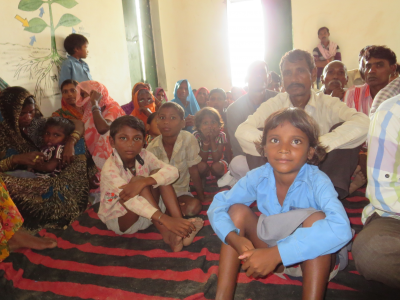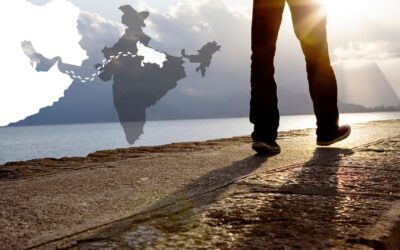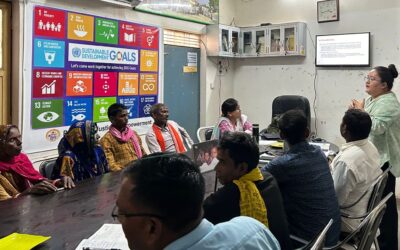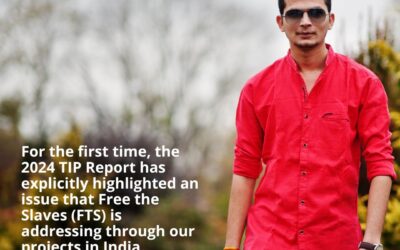Editor’s Note: This is the second of three dispatches we will feature this week written by Free the Slaves Executive Director Maurice Middleberg during his recent trip to India.
DATELINE: Varanasi District, Uttar Pradesh State, India
In the space of 24 hours we saw the transition from slavery to freedom.
Our journey began with a visit to a village where men, women and children worked as slaves in brick kilns and rice paddies. In more than 30 years of working in developing countries, this was as abject a state of poverty as I have ever witnessed.
The village consisted of dirt-floor huts made of cow dung and mud. The only visible personal possessions: a few handmade cots made of wood and rope. The only visible assets: some pigs and chickens. Basic needs such as clean water, latrines, a school for the children or essential health care were missing. The scene in this village might have come from 1,000 years ago.
But even worse than the poverty – and at its root – was the fear. We had to hide in order to speak to the villagers, who said they could be beaten for speaking to strangers without the permission of the landlord. The man serving as a the principal spokesman for the villagers was visibly terrified, but nonetheless determined to tell their story. The anxiety among the villagers who gathered was palpable.
The village had been identified by the Indian nonprofit group MSEMVS, which is supported by Free the Slaves. As a first step on the path to freedom, MSEMVS had recruited a volunteer to teach the younger children. On the day we arrived, the children were gathered under a tree and she was teaching them basic arithmetic. The gathering of children and their mothers will become the catalyst for organizing the community to defend itself. (The local police cannot be approached immediately, as they are typically in league with the landlord.)
This portrait of fear and poverty is typical of the communities where Free the Slaves and its partners begin our work.

Villagers in Sakdouri escaped slavery one year ago | Photo: FTS / Awasthi
The next day we visited Sakdouri village, where a rescue operation had taken place one year ago. Eighteen families were trapped there in a brick kiln. One person managed to contact a previously-freed village, which in turn notified MSEMVS. This led to a rescue operation that freed 45 men, women and children.
FTS South Asia Director Supriya Awasthi participated in the rescue, personally leading survivors out of the kiln and on to waiting trucks. This led to a broader effort to organize the community to resist slavery.
The lively village meeting we attended in Sakdouri was marked by pride and confidence. It was held in a clean, brightly painted building that serves as the school. The village had organized a community vigilance committee, which acts to secure the rights of the community and its members.
Here is what the villagers said to us: “We know what is bonded labor. We help find bonded laborers and rescue them. We are now prosperous.” More than 100 people came to the meeting, some from surrounding communities that been helped to achieve freedom by the residents of Sakdouri. The emerald rice paddies are now worked by free people. Thirty brick houses have replaced outdated dwellings, and more are coming. The community is receiving health care from the local health center. The community is currently advocating with the local government to have a paved road that will reach the village.
Before we left, these former slaves sang a song of freedom:
We will stand up for our rights.
By organizing, we keep our rights.
We will walk the path of truth.
We will not fear sticks, guns or slave owners.
By hard work we will achieve our destiny.
Now is the time to show our power.
Learn more about Free the Slaves successes in India on our India program webpage. See our newest video of a rescue in India on our YouTube channel.



